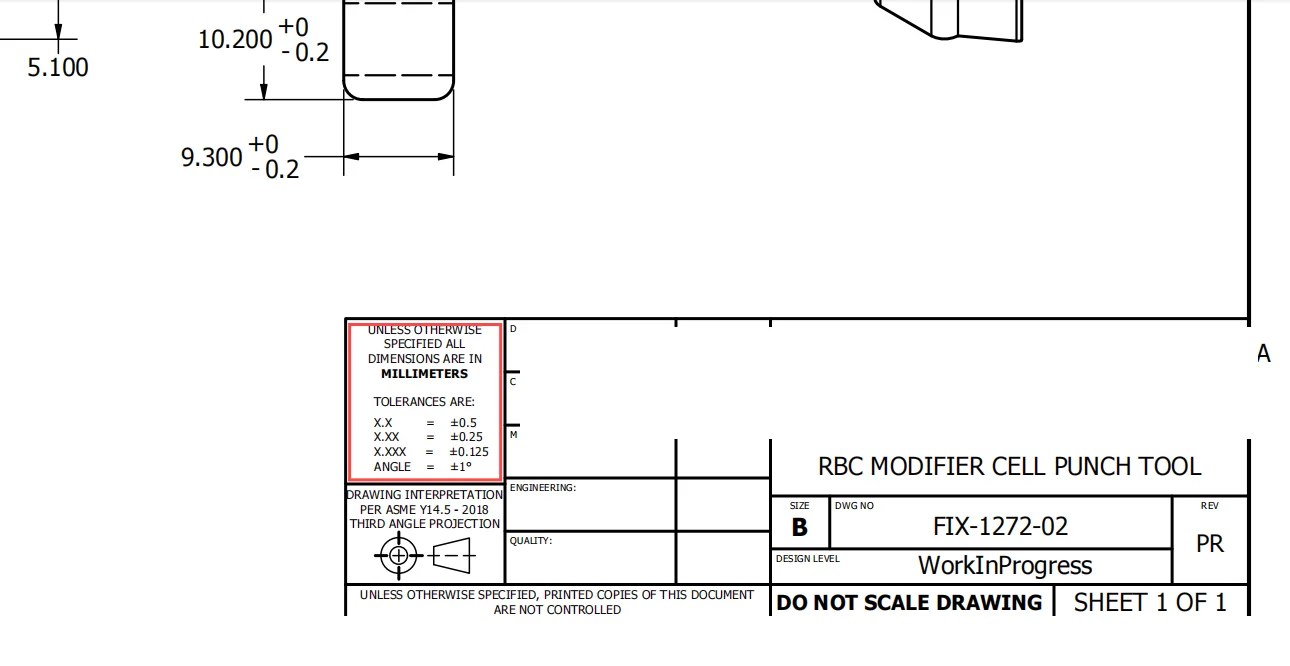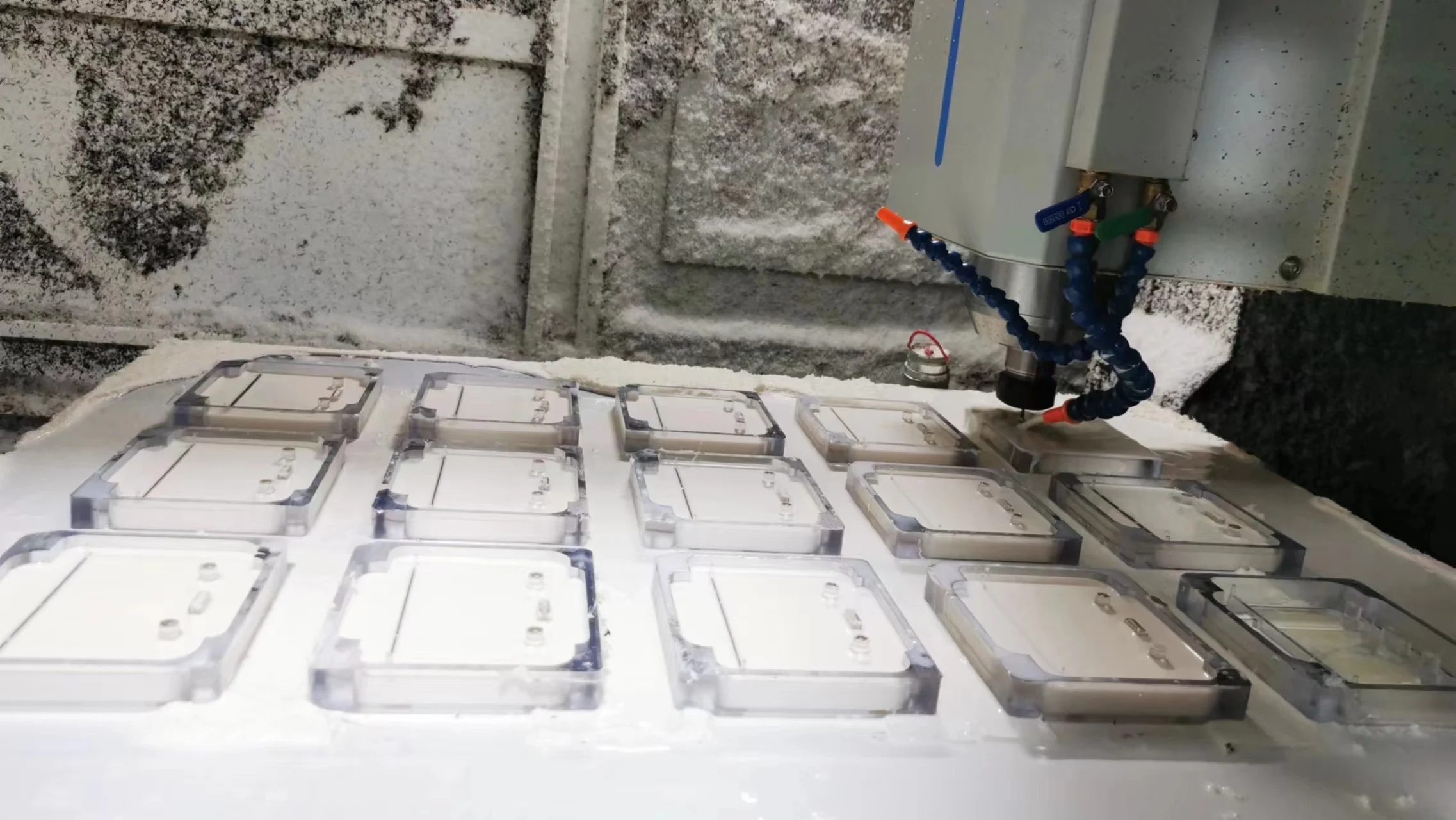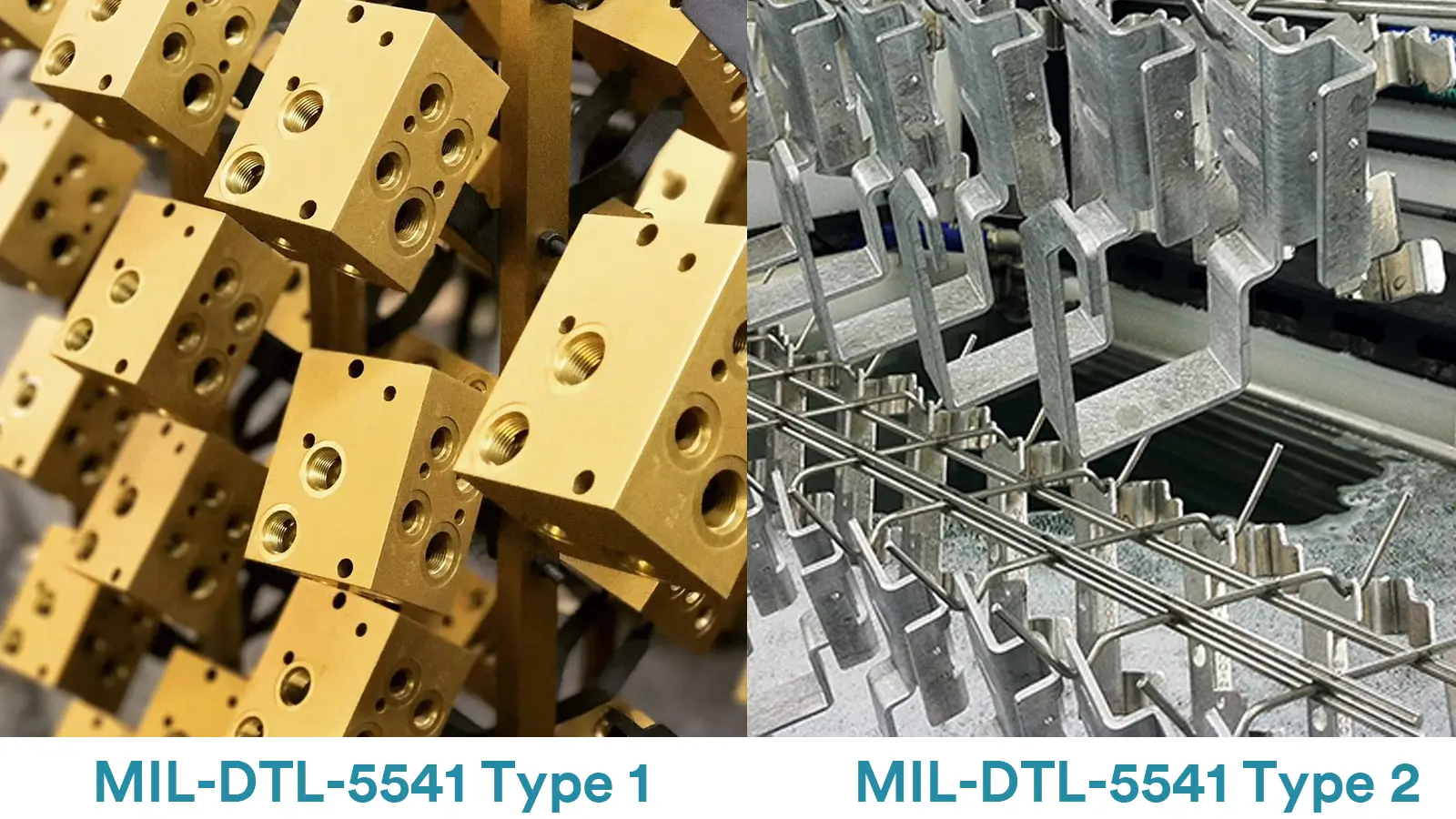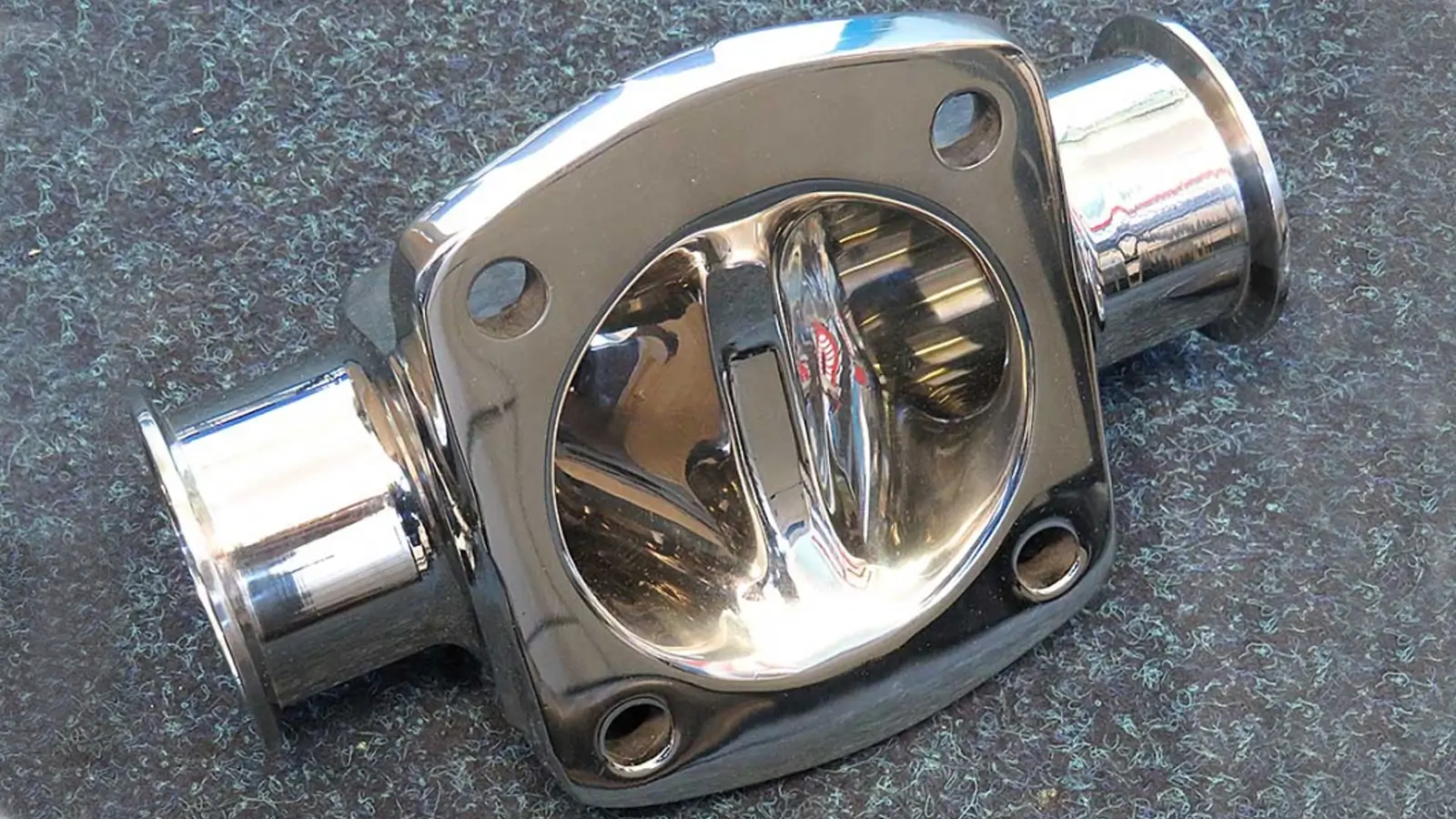Table of Contents
ISO 2768 is a globally recognized general tolerance for manufacture, covering linear and angular dimensions, as well as geometric tolerances for features without specific or individual tolerances.
Such a set of general tolerances greatly facilitates efficient communication between designers and manufacturers, playing a critical role in ensuring consistency and precision.
This article will share detailed information about ISO 2768 to help you better understand its tolerance. The latest revision of the ISO 2768 PDF is provided for download.
Key Takeaways:
- ISO 2768 standard provides the necessary precision floor for features. It guarantees that any dimension (length, angle, or geometric shape) on an engineering blueprint lacking an explicit tolerance call-out will still be manufactured within an internationally accepted general tolerance range.
- ISO 2768 is divided into two parts: ISO 2768-1, which covers linear and angular dimensions, and ISO 2768-2, which covers geometric tolerances such as flatness, straightness, and circularity.
- ISO 2768-mK is often applied in CNC machining as a standard tolerance or a typical tolerance.
Why ISO 2768 is needed?
There are a number of various products that have their own size and geometrical shape of each feature being designed and manufactured every day.
But it is challenging and costly to completely avoid deviation from the exact original design in mass production.
As a result, engineers and designers should define how much the fabricated products can deviate from the dimensions indicted on the drawings and ensure that products made based on the tolerance would function as required. That is where ISO 2768 come into effect.
ISO 2768 is a set of international standards established by the International Organization for Standardization(ISO), providing general tolerances on linear and angular dimensions, as well as geometrical features without particular tolerance indications on engineering drawings.
It does matter in various manufacturing process, including CNC machining, sheet metal fabrication and injection molding etc. Such general tolerances not only provide uniform standards to foster global cooperation, but also simplify the tolerance indications on drawings to save time and cost.
ISO 2768 consists of ISO 2768-1 and ISO 2768-2.
ISO 2768-1: Covers linear and angular dimensions.
ISO 2768-2: Covers geometric tolerances (e.g., flatness, straightness, circularity).
Now let’s talk them one by one.

General Tolerance ISO 2768-1
ISO 2768-1 is general tolerances for linear and angular dimensions without individual tolerance indications on drawings, mainly applying for internal sizes, external sizes, radii, external radii, diameters, step sizes and chamfer heights for broken edge.
There are four precision levels covered by ISO 2768 :
- Fine(F)
- Medium(M)
- Coarse(C)
- Very Coarse(V)
Designers and manufacturers can select the most suitable tolerances from them according to their own accuracy requirements and manufacturing ability.
Fine(F): Standing for minimal deviation, tolerances of Class F are the highest level for linear and angular dimensions requirement, applying for industries and products needing tight precision, such as aerospace and medical devices.
Medium(M): Balancing precision with ease of manufacturing, tolerances of Class M are broadly used in most manufacturing components, from automotive parts to consumer electronics.
Coarse(C): Tolerances of Class C are set for industries that allow larger deviation during manufacturing, like structural components in construction and heavy machinery. part one, usually used in large components where accuracy and fit does not matter that much.
Very Coarse(V): This is the stringent tolerance class, suitable for components allowing substantial deviations to some extent, like most large features that requirements for fit and finish are much looser.
| Class | Precision Description | Typical Use Case | Cost Impact |
|---|---|---|---|
F (Fine) | Highest Precision | Only used for dimensions critical to fitting or primary function. | Higher. |
M (Medium) | Standard Precision | Most commonly used. Suitable for the majority of routine CNC machined parts. | Standard Cost. |
C (Coarse) | Lower Precision | Used for large or simple parts (like castings/stampings) where function isn’t critical. | Lower. |
V (VeryCoarse) | Lowest Precision | Rarely used in high-quality CNC machining. | Lowest. |
ISO 2768-1 Tolerances Charts are as follows.
ISO 2768-1 Chart 1-Linear Dimensions
| Tolerance Class Designation (Description) | ||||
|---|---|---|---|---|
Permissible deviations in mm for ranges in nominal lengths | f (fine) | m (medium) | c (coarse) | v (very coarse) |
| 0.5 up to 3 | ±0.05 | ±0.1 | ±0.2 | — |
| over 3 up to 6 | ±0.05 | ±0.1 | ±0.3 | ±0.5 |
| over 6 up to 30 | ±0.1 | ±0.2 | ±0.5 | ±1.0 |
| over 30 up to 120 | ±0.15 | ±0.3 | ±0.8 | ±1.5 |
| over 120 up to 400 | ±0.2 | ±0.5 | ±1.2 | ±2.5 |
| over 400 up to 1000 | ±0.3 | ±0.8 | ±2.0 | ±4.0 |
| over 1000 up to 2000 | ±0.5 | ±1.2 | ±3.0 | ±6.0 |
| over 2000 up to 4000 | — | ±2.0 | ±4.0 | ±8.0 |
Remarks: For nominal sizes below 0.5 mm, the deviations shall be indicated adjacent to the relevant nominal size(s).
ISO 2768-1 Chart 2- External Radii and Chamfer Heights
| Tolerance Class Designation (Description) | ||||
|---|---|---|---|---|
Permissible deviations in mm for ranges in nominal lengths | f (fine) | m (medium) | c (coarse) | v (very coarse) |
| 0.5 up to 3 | ±0.2 | ±0.2 | ±0.4 | ±0.4 |
| over 3 up to 6 | ±0.5 | ±0.5 | ±1.0 | ±1.0 |
| over 6 | ±1.0 | ±1.0 | ±2.0 | ±2.0 |
Remarks: For nominal sizes below 0.5 mm, the deviations shall be indicated adjacent to the relevant nominal size(s).
ISO 2768-1 Chart 3-Angular Dimensions
| Tolerance Class Designation (Description) | ||||
|---|---|---|---|---|
Permissible deviations in mm for ranges in nominal lengths | f (fine) | m (medium) | c (coarse) | v (very coarse) |
| up to 10 | ±1° | ±1° | ±1°30′ | ±3° |
| over 10 up to 50 | ±0°30′ | ±0°30′ | ±1° | ±2° |
| over 50 up to 120 | ±0°20′ | ±0°20′ | ±0°30′ | ±1° |
| over 120 up to 400 | ±0°10′ | ±0°10′ | ±0°15′ | ±0°30′ |
| over 400 | ±0°5′ | ±0°5′ | ±0°10′ | ±0°20′ |
General Tolerance ISO 2768-2
ISO 2768-2 is general tolerances of geometrical dimensions for features, covering straightness and flatness, cylindricity, and circularity.
Same as ISO 2768-1, ISO 2768-2 also divides tolerances into different classes. They are H, K and L.
Designers and manufacturers can elect the tolerance classes that fit their needs best.
H: High precision, used for features needing tough control on geometrical parts.
K: Medium precision, used for general-purpose features accepting moderate deviation.
L: Low precision, used for features accepting slight deviation on geometry.
ISO 2768-2 Tolerances Charts are as follows.
ISO 2768-2 Chart 1- Straightness and Flatness
| Tolerance Class | |||
|---|---|---|---|
Ranges of nominal lengths in mm | H | K | L |
| up to 10 | 0.02 | 0.05 | 0.1 |
| above 10 to 30 | 0.05 | 0.1 | 0.2 |
| above 30 to 100 | 0.1 | 0.2 | 0.4 |
| above 100 to 300 | 0.2 | 0.4 | 0.8 |
| above 300 to 1000 | 0.3 | 0.6 | 1.2 |
| above 1000 to 3000 | 0.4 | 0.8 | 1.6 |
ISO 2768-2 Chart 2- Perpendicularity
| Tolerance Class | |||
|---|---|---|---|
Ranges of nominal lengths in mm | H | K | L |
| up to 100 | 0.2 | 0.4 | 0.6 |
| above 100 to 300 | 0.3 | 0.6 | 1.0 |
| above 300 to 1000 | 0.4 | 0.8 | 1.5 |
| above 1000 to 3000 | 0.5 | 1.0 | 2.0 |
ISO 2768-2 Chart 3- Symmetry
| Tolerance Class | |||
|---|---|---|---|
Ranges of nominal lengths in mm | H | K | L |
| up to 100 | 0.5 | 0.6 | 0.6 |
| above 100 to 300 | 0.5 | 0.6 | 1.0 |
| above 300 to 1000 | 0.5 | 0.8 | 1.5 |
| above 1000 to 3000 | 0.5 | 1.0 | 2.0 |
ISO 2768-2 Chart 4- Circular Run-Out
| Tolerance Class | |||
|---|---|---|---|
Ranges of nominal lengths in mm | H | K | L |
| 0.1 | 0.2 | 0.5 | |
Advantages of ISO 2768
ISO 2768 establishes a set of international uniform standards of tolerancing, which benefits both designers and manufacturers.
With the help of this series of general tolerances, engineering drawings can be more clear, concise and applicable for various processes and materials. Blow is a list of several key advantages of ISO 2768:
Simplify Drawing Specifications: This is one of the most prominent advantages of ISO 2768. For its generality, usage of individual tolerances can be reduced and then specifications on drawing would be streamlined.
Improve Compatibility between Parts: Because of the consistency and generality of ISO 2768, it is more likely and convenient for parts from different suppliers and manufacturers to be interchanged and compatible.
Facilitate Communication between Designers and Manufacturers: ISO 2768 makes designers and manufacturers interpret tolerance specifications on drawings through the same way, thus assisting to enhance efficiency of communication and cooperation between them.
Save Time and Cost: Using general standards like ISO 2768 helps to save time on design, communication and inspection, meanwhile manufacturing cost can be lower for reduced reworks and material wasting.
Ensure Quality Control: Clear general tolerances are beneficial to reducing manufacturing errors and managing better quality control, as the permissible deviation for linear and angular dimensions are indicated directly and clearly.
Application of ISO 2768
ISO 2768 in Industries
ISO 2768 is widely applied in multiple industries for its uniformity and other remarkable advantages. Its general tolerances improve that features can fit and finish correctly even if they are produced by different manufacturers or through different techniques.
The main industries that utilize ISO 2768 include aerospace, medical devices, automotive engineer, electronics, mechanical engineer, industrial design and manufacturing etc.
Even the precision requirements of these industries vary a lot, ISO 2768 can fulfil their needs well. The key focuses on choosing the most suitable tolerance.
Tips for Implementing ISO 2768
Based on the popularity and generality of ISO 2768, it is beneficial to learn how to use it effectively and correctly. Here are some useful tips for implementing ISO 2768:
Interpret ISO 2768 Specifications: Usually, the ISO 2768 specifications would be indicated on the title block of drawings directly and they are often composed of two parts.
Take ISO 2768-mK, one of the most typical machining tolerances for example. It is comprised of ISO 2768-m and ISO 2768-K. The former one is the medium level(m) from ISO 2768-1 and the latter is the medium level(K) from ISO 2768-2.
That is to say, when using ISO 2768-mK, the linear and angular dimensions, as well as the geometrical features are all confined within medium precision.
Assessing Manufacturing Capabilities: This is an important factor to consider when choosing the best tolerance for your production. You are supposed to evaluate the machining capabilities can handle the specific tolerances.
Ensure your CNC machining process or other technical production can meet the necessary tolerances for those geometrical requirements for features.
Balancing Cost and Precision: You should know that the higher the precision level is, the higher the cost is. Over-tolerancing should be avoided.
Considering Material Properties: The properties of material mater in production, since the fit and finish are influenced by them, and they behave differently during manufacturing.
ISO 2768 in CNC Machining
Generally, the tolerance requirements would be indicated on the bottom right of 2D in CNC machining. ISO 2768-mK is often applied in CNC machining as standard tolerance or typical tolerance.
Below is a standard 2D drawing from ECOREPRAP, on which you can see that ISO 2768-mK is our standard CNC machining tolerance.

Following are several pictures showing drawing specifications from clients of different countries. Some clients use ISO 2768-mK or ISO 2768 V to indicate their wishing tolerances.



The main reason is that designers, programmers and manufacturers can catch the tolerances indicated clearly on 2D drawings through decimal places quickly.
Some operators do not know what ISO 2768 is specifically, but they can interpret the tolerances indicated through decimal places easily. While there is still one thing to be stated: ISO 2768 can be in mm and inch.
Learn more about other standards of CNC machining tolerances.
ISO 2768 Standards in Different Countries
The specific names of ISO 2768 vary in different countries. For instant, DIN ISO 2768 is generally used in German, and in China ISO 2768 would be called GB/T 2768( GB/T is Chinese recommended standard). While ISO 2768 would be used as ANSI/ISO 2768.
Conclusion
Precision is one of the most crucial aspects of production and manufacture. Good tolerance standards can ensure the precision meet the requirements well.
ISO 2768 is such a brilliant set of general tolerances, bringing varieties of convenience and advantages to lots industries. If you want to learn more about ISO 2768, please feel free to visit ECOREPRAP.
FAQ about ISO2768
Does ISO 2768 have different precision levels? Which one should I choose?
Yes, it offers four main classes that control the precision of linear dimensions, angles, and general form/location (like flatness): fine, medium, coarse, and very coarse.
Our Recommendation: If you don’t specify anything, we typically default to the ISO 2768 m (Medium) class, as it offers the best balance of cost and quality for general CNC parts.
What if my part needs higher accuracy than the standard?
If a certain dimension (like a bore for a bearing or a key fit) needs a tolerance tighter than what ISO 2768 m provides (e.g., 0.02mm), you must call out that specific tolerance value directly on the drawing.
What’s the difference between ISO 2768 and GD&T (Geometric Tolerancing)?
ISO 2768: Primarily controls size (length, width, diameter) and angular deviations. It deals with the part’s general dimensional accuracy.
GD&T: Uses specific symbols to control the part’s form, orientation, and location (e.g., flatness, perpendicularity, position). It deals with the part’s geometric functional accuracy.
What are the main parts of ISO 2768?
ISO 2768 is divided into two parts:
ISO 2768-1: General tolerances for linear and angular dimensions
ISO 2768-2: General tolerances for geometrical features, including flatness, straightness, and circularity
Can ISO 2768 be applied to both metric and imperial units?
Yes. ISO 2768 can be used in millimeters (mm) or inches (inch) depending on the drawing specification or industry standards.
If I specify ISO 2768 on my drawing, does that mean I cannot specify individual tolerances for any dimensions?
Absolutely not. ISO 2768 is a “default” or “fallback” standard. You can specify “ISO 2768-mK” on the drawing as a general tolerance, while simultaneously specifying tighter tolerances individually for those critical fitting or functional dimensions. Manufacturers will prioritize the individually specified dimensions.

Lucas is a technical writer at ECOREPRAP. He has eight years of CNC programming and operating experience, including five-axis programming. He’s a lifelong learner who loves sharing his expertise.
Other Articles You Might Enjoy

GDT Symbol Chart
GD&T (Geometric Dimensioning and Tolerancing) is an internationally standardized engineering language, following standards such as ASME Y14.5 or ISO 1101.

CNC Machining Tolerances Guide
Machining tolerance is the acceptable value scope of deviation from the original designed feature dimensions indicated on drawings.

Top 5 Prototype Manufacturing China
Selecting the right prototype manufacturing supplier in China is a critical decision that can significantly impact the success of your product development project.

CNC Machining Tolerances Guide
Machining tolerances stand for the precision of manufacturing processes and products. The lower the values of machining tolerances are, the higher the accuracy level would be.





